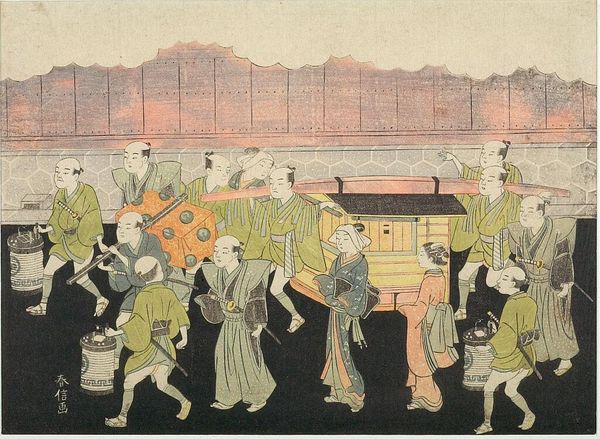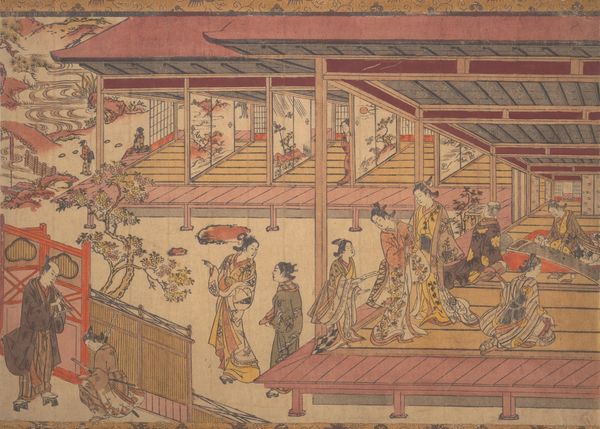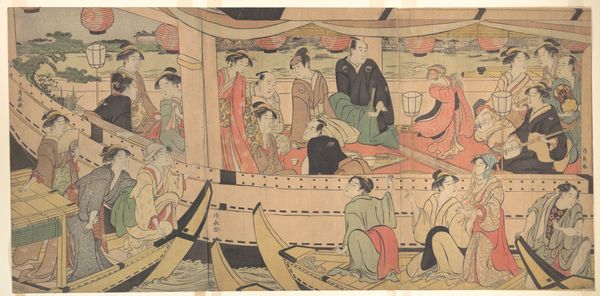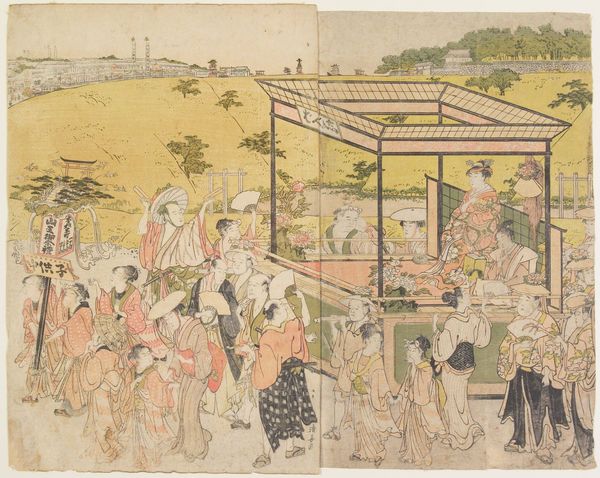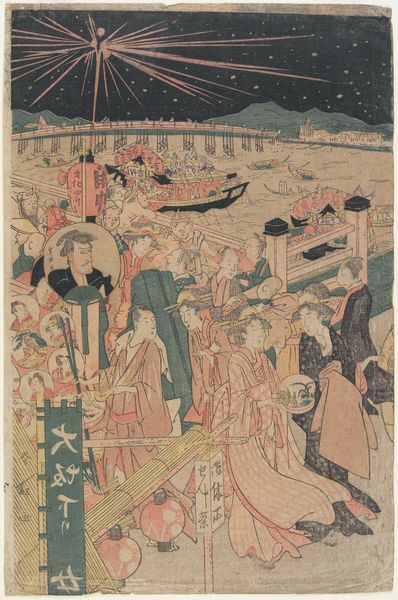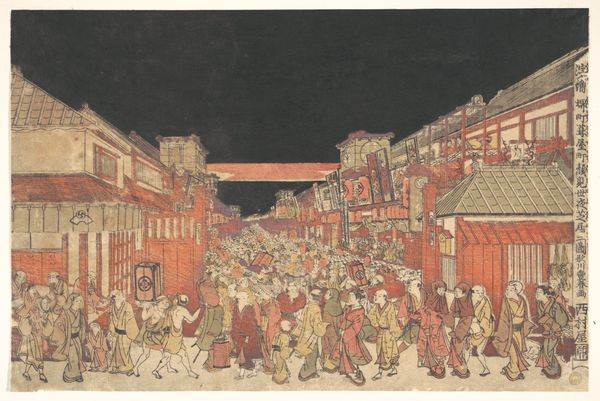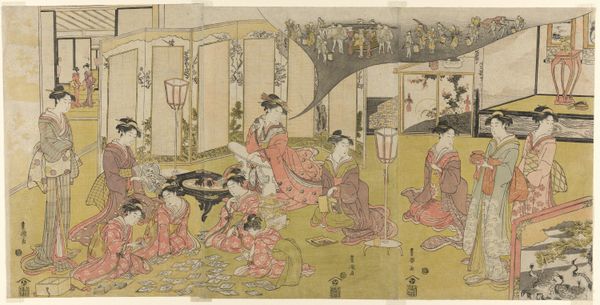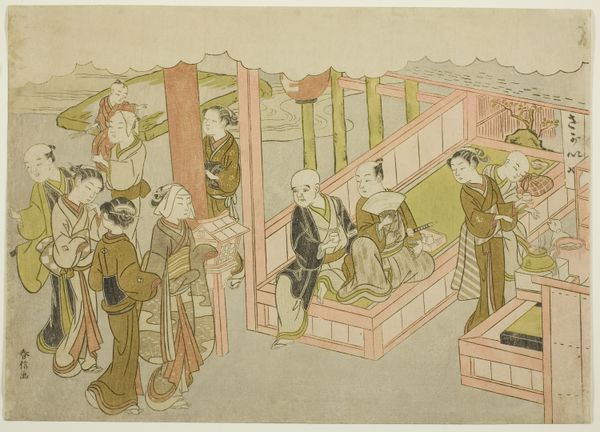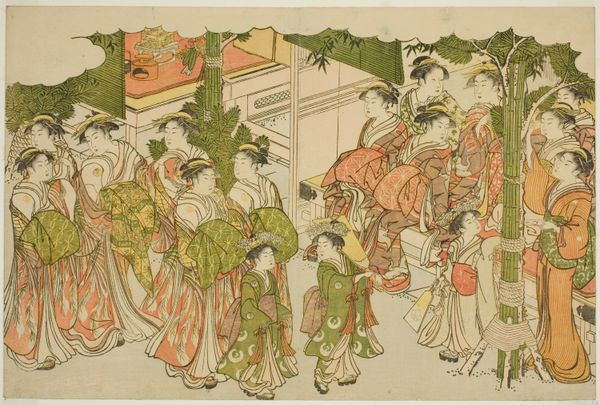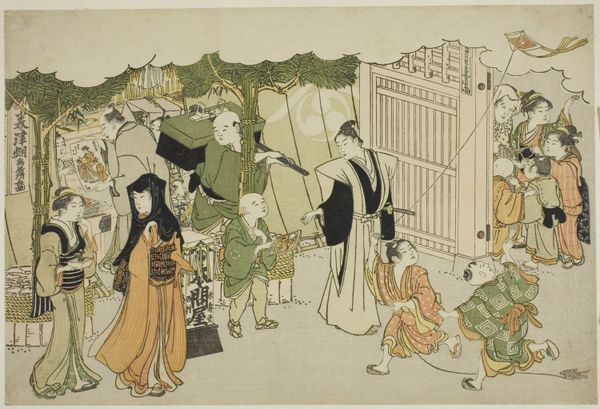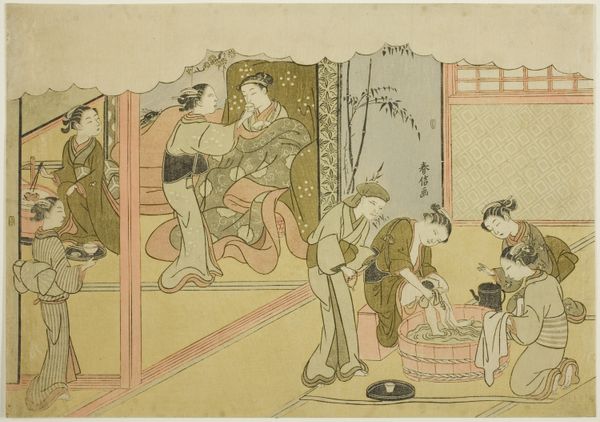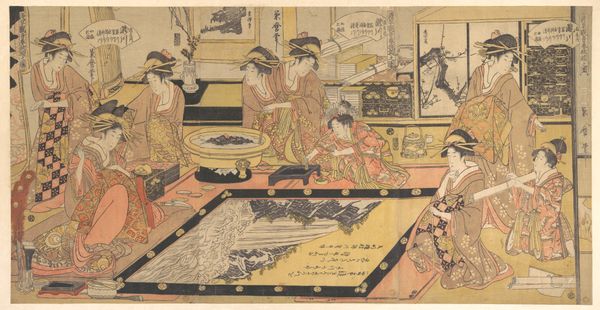
The Bride Riding in the Palanquin to Her Husband's House (Koshi-iri), the third sheet of the series "Marriage in Brocade Prints, the Carriage of the Virtuous Woman (Konrei nishiki misao-guruma)" c. 1769
0:00
0:00
print, woodblock-print
# print
#
asian-art
#
ukiyo-e
#
woodblock-print
Dimensions: 7 7/8 × 11 in.
Copyright: Public Domain
Suzuki Harunobu made this woodblock print around 1768, depicting a bride on her way to her new husband's house. We see a procession, led by lantern bearers and followed by attendants carrying the bride in a palanquin. Marriage was a key institution in 18th-century Japan, particularly for the samurai and merchant classes who commissioned and consumed art like this. Marriages were often arranged to consolidate wealth and power, and the bride's journey to her new home was a public demonstration of the union's importance. Harunobu's print idealizes this custom, presenting a vision of harmony and order, but there’s also an unspoken commentary on the social hierarchy. The servants, laborers, and even the bride herself are all bound by expectations of duty and decorum. To fully appreciate this print, consider researching the social customs of Edo-period Japan. You might look at etiquette manuals, family records, and other visual representations of marriage. Through that, we see art not just as an aesthetic object, but as a window into a specific time and place.
Comments
No comments
Be the first to comment and join the conversation on the ultimate creative platform.
